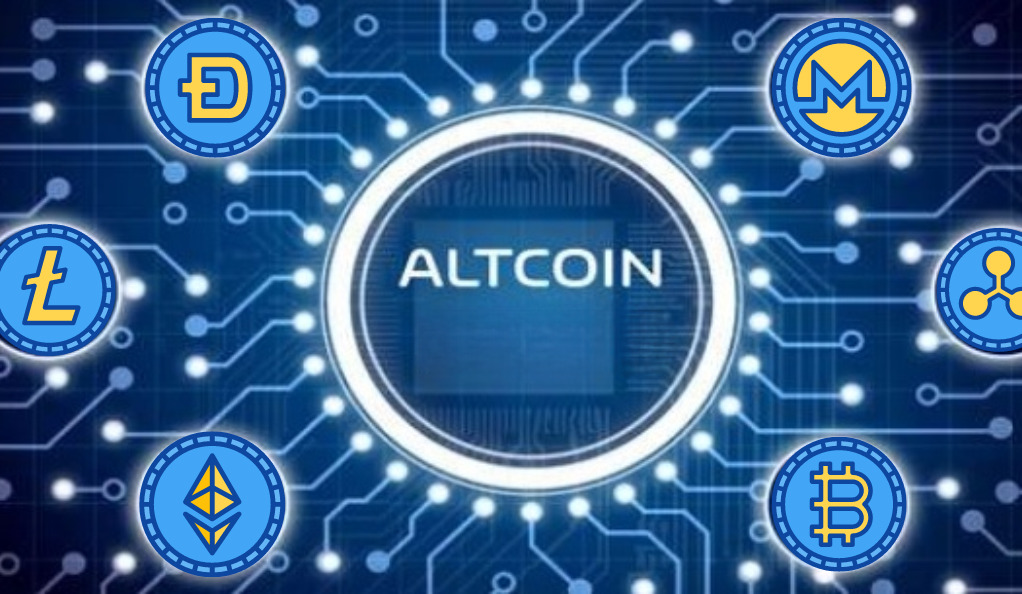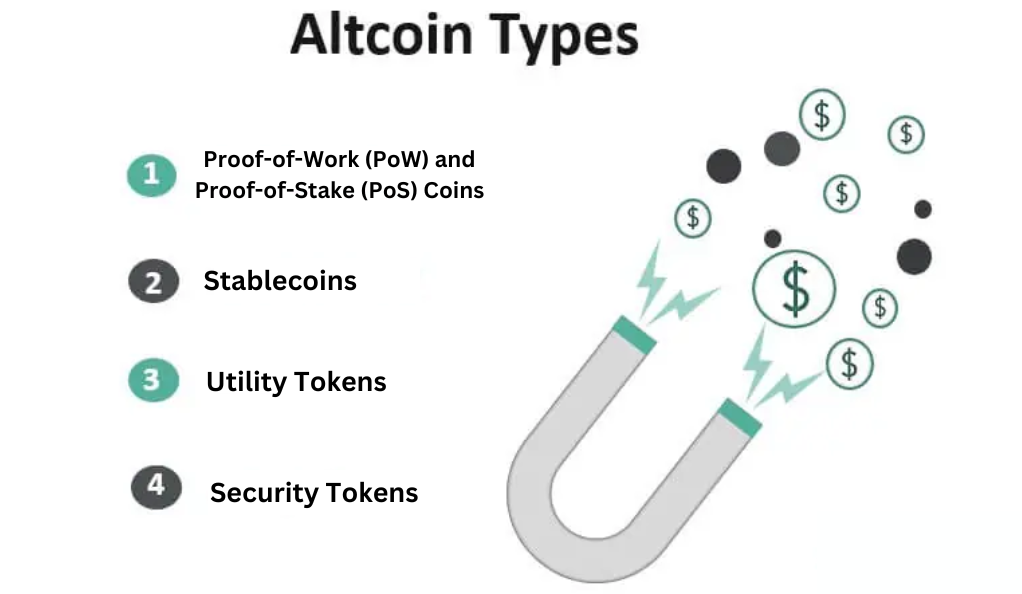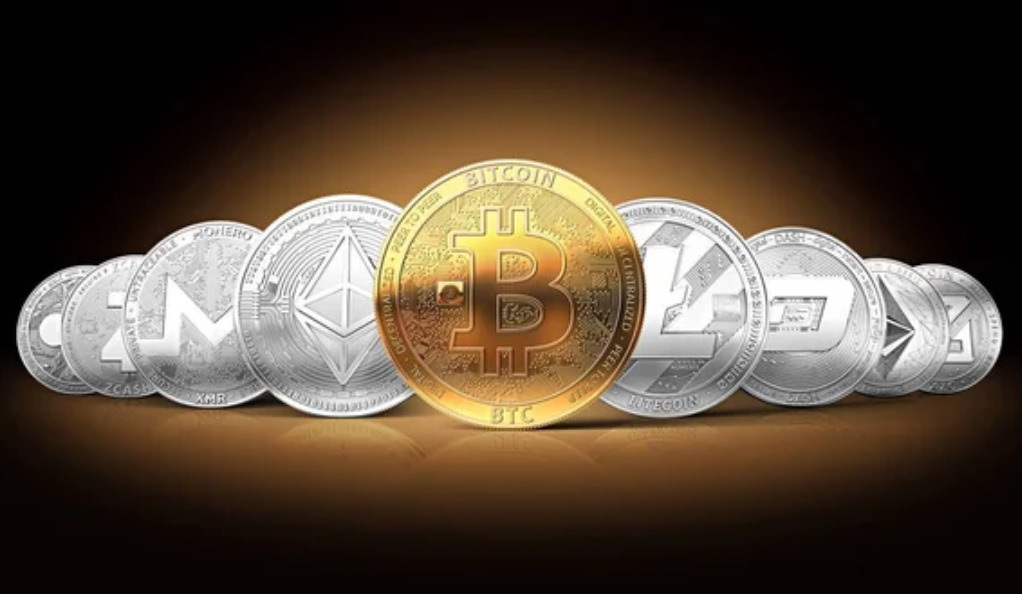Introduction
In the vast universe of cryptocurrencies, Bitcoin stands as the pioneering force, often hailed as the “king” of all coins. However, since Bitcoin’s inception in 2009, the cryptocurrency market has seen an explosion of alternative cryptocurrencies, known as “altcoins.” These altcoins have not only expanded the range of investment opportunities but have also brought about significant technological and financial innovations. This article delves deeper into the realm of altcoins, exploring their origins, significance, and the transformative effects they’ve had on the cryptocurrency landscape. As we journey through this exploration, it becomes evident that altcoins are more than just alternatives; they are catalysts for change in the digital financial world.
What are Altcoins?

The term “altcoin” is derived from “alternative” and “coin,” signifying any cryptocurrency other than Bitcoin. Altcoins emerged as alternatives to Bitcoin, either by modifying the existing Bitcoin protocol or by introducing entirely new protocols. These digital currencies, such as Ethereum, Ripple (XRP), and Litecoin, have their unique features, use cases, and value propositions. While some altcoins aim to improve upon the perceived limitations of Bitcoin, others venture into entirely new territories, offering functionalities far beyond the realm of mere currency.
Types of Altcoins
- Proof-of-Work (PoW) and Proof-of-Stake (PoS) Coins: These coins operate on consensus mechanisms similar to Bitcoin. Litecoin and Dogecoin, for instance, utilize PoW, while Cardano and Polkadot employ PoS. These mechanisms determine how new coins are created and how transactions are verified, with PoS often being seen as a more energy-efficient alternative to PoW.
- Stablecoins: Designed to combat the notorious volatility of cryptocurrencies, stablecoins are pegged to stable assets like the US dollar. Tether (USDT) and USD Coin (USDC) are prime examples. By offering stability, these coins provide a bridge between traditional fiat currencies and the digital crypto world, facilitating easier adoption for everyday transactions.
- Utility Tokens: These tokens grant users access to specific products or services within a platform. Ethereum’s ERC-20 tokens, for instance, can represent anything from loyalty points to assets, making them versatile tools in the decentralized ecosystem.
- Security Tokens: Acting as digital representations of ownership in real-world assets, security tokens can be likened to traditional securities. They can represent stakes in real estate, companies, or other investments, bringing the benefits of blockchain, like transparency and security, to conventional finance.

Impact of Altcoins
- Diversification of the Cryptocurrency Market: Altcoins have enriched the crypto ecosystem, offering investors a myriad of choices beyond just Bitcoin. This diversification has not only spread risk but has also fostered a more vibrant and resilient market, where different coins cater to varied user needs and preferences.
- Innovation in Blockchain Technology: Altcoins have been at the forefront of technological advancements. Ethereum’s introduction of smart contracts, for instance, has paved the way for decentralized applications, reshaping how businesses operate and contracts are executed in the digital age.
- Financial Inclusion: Altcoins, especially those like Ripple, are revolutionizing the financial landscape by making cross-border transactions swifter, more affordable, and efficient. Such innovations hold the promise of bringing financial services to regions historically underserved by traditional banking systems.
- Challenges to Traditional Finance: With the advent of stablecoins, traditional banking systems, especially in countries grappling with economic instability, face competition. Stablecoins offer a more predictable financial tool, free from the whims of local economic challenges.
- Niche Solutions: The vast array of altcoins means that many cater to specific sectors or problems. From VeChain’s focus on supply chain management to Monero’s emphasis on transactional privacy, altcoins are providing tailored solutions to modern-day challenges.
Challenges and Criticisms
Despite the numerous advantages and innovations brought about by altcoins, they’ve also been met with skepticism and challenges:
- Volatility: Many altcoins experience extreme price fluctuations, making them a high-risk investment. This volatility can deter mainstream adoption and make day-to-day transactions unpredictable.
- Regulatory Concerns: The meteoric rise of altcoins has attracted the attention of global regulators. Concerns range from potential money laundering activities to investor protection, leading to calls for more stringent oversight.
- Quality and Viability: With the proliferation of altcoins, discerning genuine projects from fleeting “pump and dump” schemes becomes crucial. Not all altcoins have a clear vision or utility, leading to potential pitfalls for unsuspecting investors.
Conclusion
Altcoins, in their myriad forms and functionalities, have undeniably reshaped the cryptocurrency landscape. They’ve introduced novel solutions, diversified investment avenues, and posed both opportunities and challenges for investors, developers, and regulators. As the world of digital finance continues its relentless evolution, altcoins will undoubtedly remain central players, driving innovation and redefining the boundaries of what’s possible.
FAQs
An altcoin, short for “alternative coin,” refers to any cryptocurrency other than Bitcoin. Altcoins emerged to offer alternatives to Bitcoin, either by improving upon its features or introducing entirely new functionalities. Examples include Ethereum, Ripple (XRP), Litecoin, and many others.
While Bitcoin was primarily designed as a decentralized digital currency, altcoins often come with varied purposes and functionalities. Some altcoins, like Litecoin, focus on faster transaction speeds, while others, like Ethereum, introduce features like smart contracts. Additionally, altcoins might operate on different consensus mechanisms, such as Proof-of-Stake (PoS) instead of Bitcoin’s Proof-of-Work (PoW).
The value and potential of altcoins vary widely. While some have shown significant promise and have established strong use cases, others might be more speculative in nature. It’s essential for investors to conduct thorough research, understand the specific altcoin’s purpose, and consider its long-term viability before investing. As with all investments, there’s an inherent risk, and past performance is not indicative of future results.
Stablecoins are a type of altcoin designed to have a stable value, typically pegged to a traditional currency like the US dollar or a commodity like gold. Examples include Tether (USDT) and USD Coin (USDC). Stablecoins aim to combine the benefits of cryptocurrencies, such as fast transactions and decentralization, with the stability of traditional currencies. They can act as a hedge against the volatility of other cryptocurrencies and play a crucial role in facilitating transactions within the crypto ecosystem.
Regulatory perspectives on altcoins vary by country and the specific nature of the altcoin. While some nations have embraced the potential of altcoins and have set up regulatory frameworks to support their growth, others have been more cautious, citing concerns over potential misuse, investor protection, and financial stability. It’s essential to be aware of the regulatory environment in one’s jurisdiction before engaging in altcoin-related activities.
Investdigital is committed to delivering unbiased and reliable information on subjects like cryptocurrency, finance, trading, and stocks. It's crucial to understand that we do not possess the capability to offer financial advice, and we actively encourage users to conduct their own comprehensive research.
Read More



